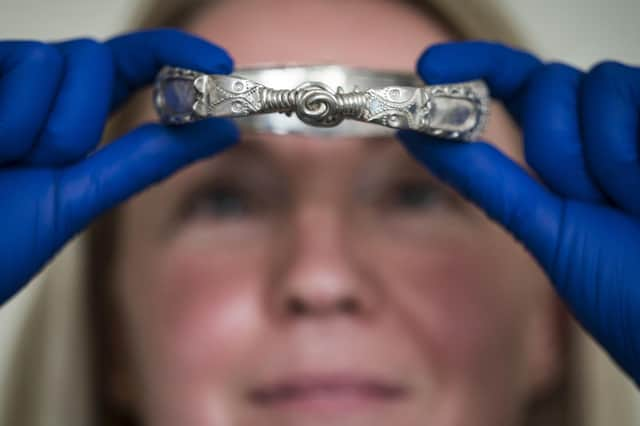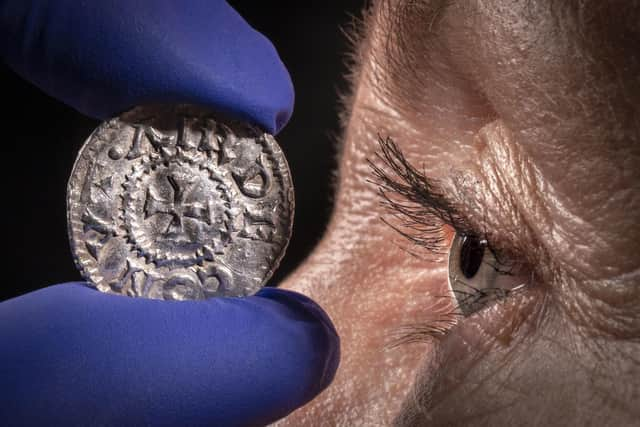Amazing Viking silver hoard, with arm rings, hacksilver, ingots and coins, goes on display in Yorkshire


It is now on display for the first time outside the county, after being loaned to Jorvik Viking Centre, in York, by Lancashire County Museum Service.
The full hoard contains over 200 pieces, including arm rings, hacksilver, ingots and coins, as well as the lead container in which they were found buried just 16 inches deep in the
ground.


Advertisement
Hide AdAdvertisement
Hide AdThe coins vary from Arabic to Anglo-Saxon, Anglo-Viking and Viking, showing how far and wide the Vikings travelled, and date from around AD 900, a time of intense conflict between the Anglo-Saxons and the Danish settlers of northern England.
They include coins of Alfred the Great and the Danish-ruled Kingdom of Northumbria, while one was stamped with the name of a previously unknown Viking ruler.
While no-one knows for sure why someone chose to bury all their valuables in a random field – and what stopped them from returning to collect it – several Viking-age hoards have been discovered along the route between the centres of Scandinavian power in Dublin and York.
The Silverdale hoard has striking similarities with the much larger Cuerdale Hoard, found in 1840 about 40 miles away near Preston.
Advertisement
Hide AdAdvertisement
Hide AdHead of Collections and Archives at Jorvik, Christine McDonnell, said: “Items made of precious metals like silver would often be used as bullion currency. Hoards provide historians with a snapshot of society at the time they were hidden.
“This hoard, for example, features a coin minted in the name of Harthacnut – a ruler whose name was previously lost to history. Other coins show the broad connections of the Viking
world, from Northumbria to Baghdad.”
Dr Gareth Williams, from the British Museum, will explain the hoard’s significance in a free online lecture taking place during the online That Jorvik Viking Thing festival, which starts on February 19.